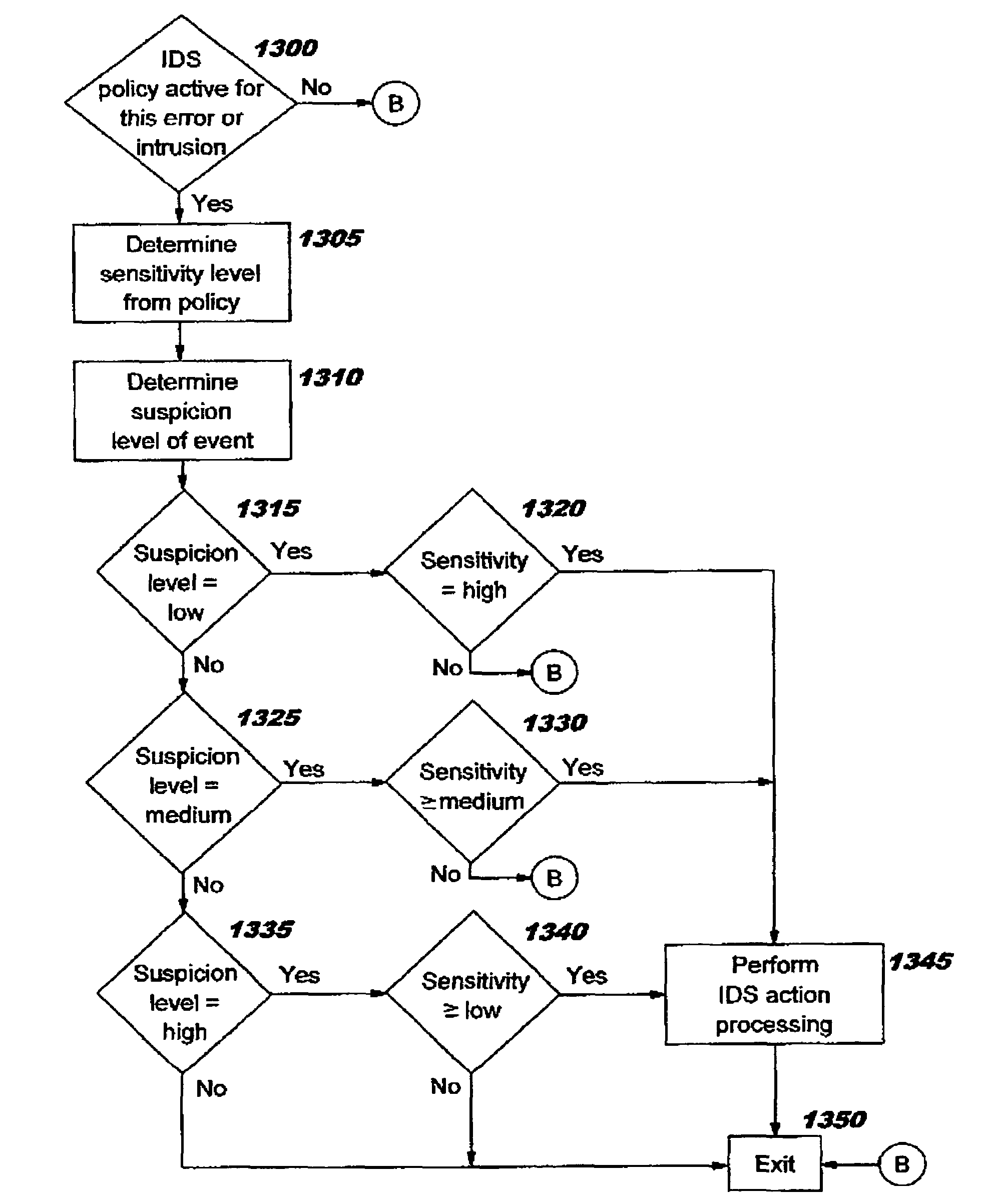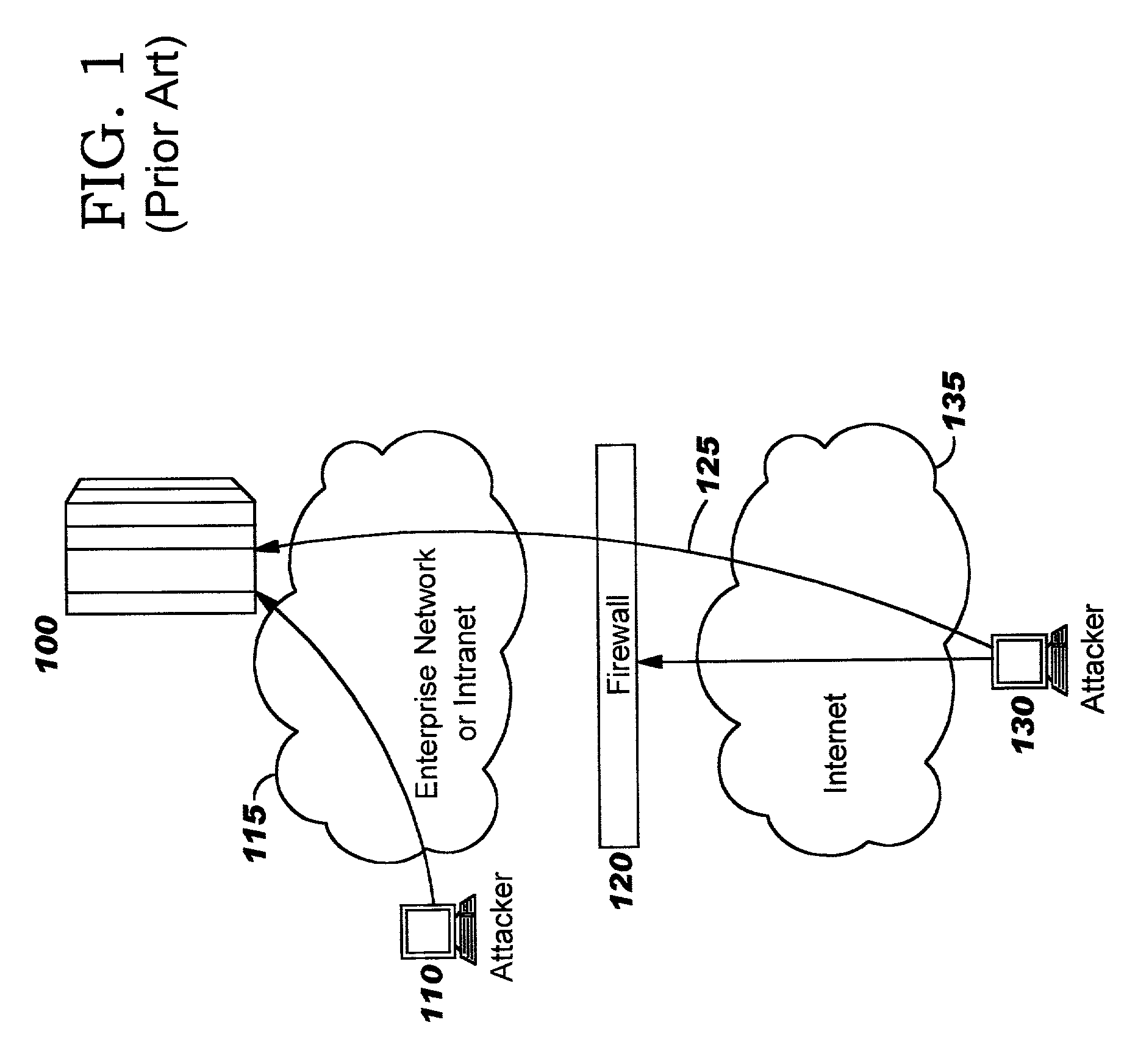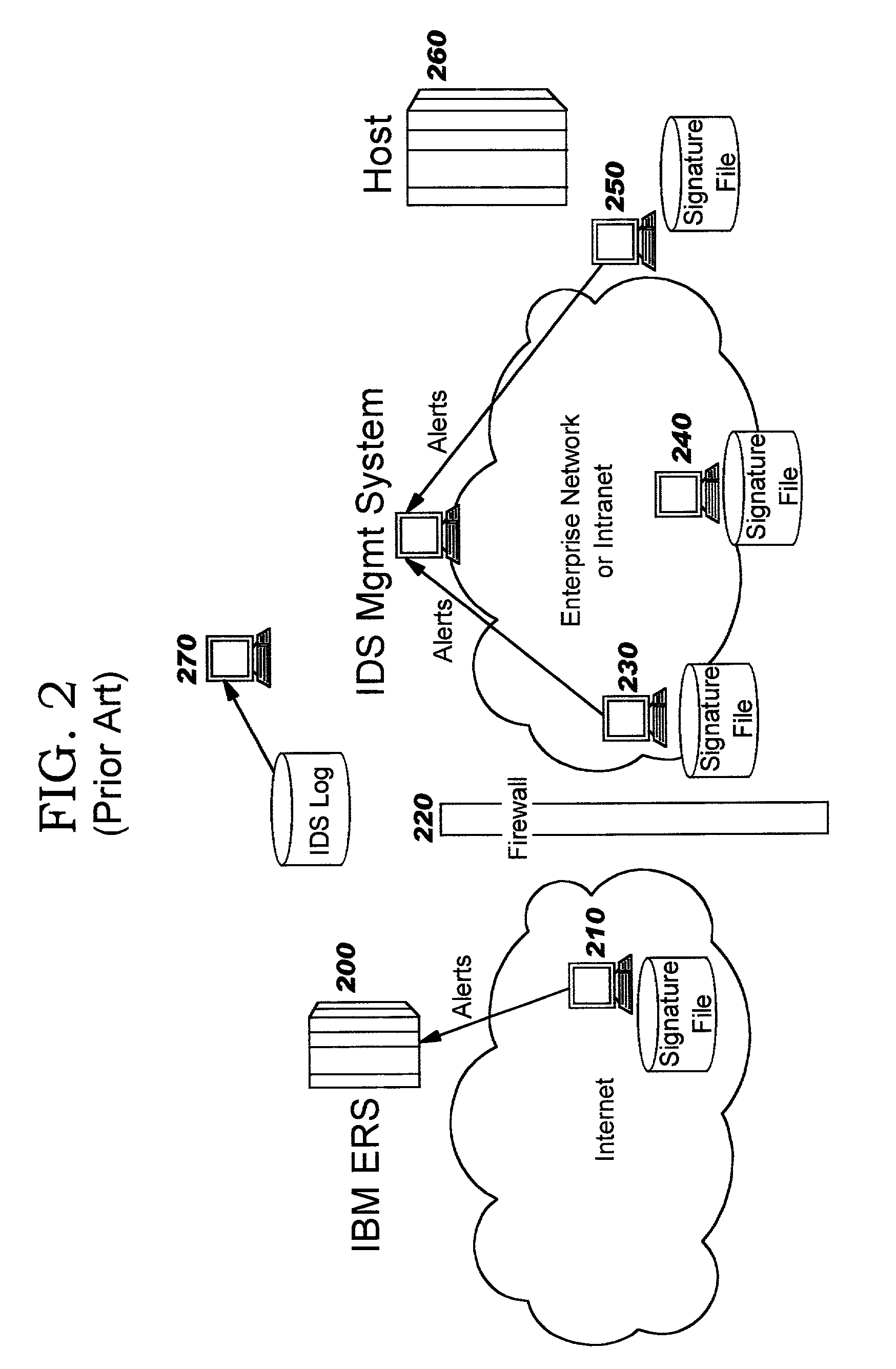Intrusion event filtering
a technology of intrusion event and filtering, applied in the field of computer security, can solve the problems of business harm by rendering a network, system, or application unusable, gaining unauthorized use of a system as a stepping stone, and other attacks cannot be effectively neutralized by the target system, so as to improve computer security
- Summary
- Abstract
- Description
- Claims
- Application Information
AI Technical Summary
Benefits of technology
Problems solved by technology
Method used
Image
Examples
Embodiment Construction
[0046]The present invention defines an intrusion detection service that, in preferred embodiments, is integrated into a system or server (referred to hereinafter as a “target server” or “target system”, or equivalently as a “destination server” or “host”) that is the potential target of attack. This integrated intrusion detection service can fit into an IDS infrastructure comprised of a variety of IDS components, including IDS sensors (e.g. sniffers), scanners, analyzers, and an IDS management system. This integrated intrusion detection service preferably does not replace other IDS components in the network, but rather complements them. In fact, many security experts are proponents of using different types of IDS components (and components from different vendors) in order to have better attack coverage, drawing on the strengths of each IDS component. Thus, an implementation of the present invention may be added to an existing IDS to increase the protection afforded to an enterprise'...
PUM
 Login to View More
Login to View More Abstract
Description
Claims
Application Information
 Login to View More
Login to View More - R&D
- Intellectual Property
- Life Sciences
- Materials
- Tech Scout
- Unparalleled Data Quality
- Higher Quality Content
- 60% Fewer Hallucinations
Browse by: Latest US Patents, China's latest patents, Technical Efficacy Thesaurus, Application Domain, Technology Topic, Popular Technical Reports.
© 2025 PatSnap. All rights reserved.Legal|Privacy policy|Modern Slavery Act Transparency Statement|Sitemap|About US| Contact US: help@patsnap.com



